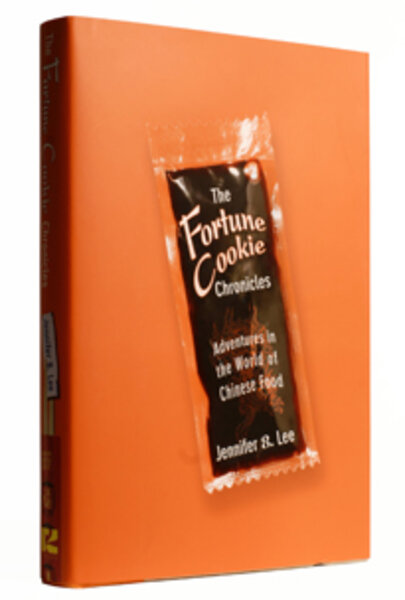40,000 eggrolls to go
Loading...
Luddite me made a surprisingly funny joke to two techies after reading Jennifer 8. Lee’s delightful The Fortune Cookie Chronicles: Adventures in the World of Chinese Food.
“McDonald’s is to Microsoft as Chinese restaurants are to Linux,” I chirped confidently. My friends at first couldn’t believe what had just come out of my mouth – technology and I do not get along – and then they couldn’t stop laughing.
For those of you still scratching your head, here’s Lee’s more thorough explanation: “If McDonald’s is the Windows of the dining world (where one company controls the standards), then Chinese restaurants are akin to the Linux operating system, where a decentralized network of programmers contributes to the underlying source code. The code is available for anyone to use, modify, or redistribute freely.”
Indeed, in Chinese restaurants across the United States and beyond, regardless of size, location, or ownership, you can count on recognizing the same reliable fare: fried rice, chow mein, General Tso’s chicken, and, of course, a fortune cookie at meal’s end.
Is this why there are more Chinese restaurants in the US than all the McDonald’s, Burger Kings, and Kentucky Fried Chickens combined? Is there a real-life General Tso and why did his chicken cross the ocean? And just where did that crispy little cookie really come from?
Armed with her wunderkind background as a New York Times reporter since the age of 24 – not to mention her Harvard degree in both applied mathematics and economics – Lee begins her quest following the improbable story of more than 100 (yes, 100) Powerball lottery winners in the US who in March 2005 had all chosen their winning numbers from fortune cookies.
One thing led to another and Lee’s nationwide search for a hundred-plus small slips of paper grew and grew, until suddenly she was on a globetrotting mission to discover the truth about fortune cookie origins, which then morphed again into a quest for the who-what-where-and-why of the ubiquity of Chinese food in America.
The one word that sums up Lee’s findings on her rollicking adventures is “ersatz.” That’s not meant as a judgment, just a statement of fact. What we eat (and how we eat) in American Chinese restaurants is anything but “real Chinese food,” Lee, a second generation Chinese-American discovers. “It’s American. It just looks Chinese.”
For one thing, there’s no actual soy in American soy sauce – and the vast majority of those clear packets with brown liquid are manufactured in a Jewish, family-owned factory in New Jersey.
Even the Chinese takeout containers – originally used to hold shucked oysters in the early 20th century – are available only in the US. They’re not even sold in neighboring Canada. (And how about this for Chinese restaurant trivia: In takeout boxes on the East Coast of the US, wires run the short length of the box, while on the West Coast they run the long way.)
But most important, Lee tells us, fortune cookies do not exist in China – unless they’ve been imported from these American shores.
“The Fortune Cookie Chronicles” is packed full of such ah-ha tidbits, delicious secrets, and fun facts. But where Lee shines most is in the narration of the stories of the real-life people she meets on her worldwide discovery tour.
She travels to Fujian Province, “the single largest exporter in the world of Chinese restaurant workers today.” She tells the harrowing story of the six-year odyssey of Michael Chen and his quest to make it to the US. (He was a passenger on the Golden Venture, the ill-fated vessel which, in June 1993, ferried almost 300 illegal immigrants from China to the US only to run aground on New York’s Rockaway Beach.)
Today, Chen owns a 150-seat Chinese restaurant in an upscale suburb of Columbus, Ohio.
Lee humanizes her numbers-filled reportage of the life-threatening dangers Chinese restaurant delivery staff face with a day-by-day account of a single worker who seems to have disappeared into thin air. She follows the plight of a fractured immigrant family who settle in a tiny Georgia town and cling to ownership of the lone Chinese restaurant which they blindly hope will provide them with life and liberty in their adopted land.
In the midst of telling the stories of others, Lee ultimately discovers her own: “This book began as a quest to understand Chinese food. But three years, six continents, twenty-three countries, and forty-two states later, I realize it was actually a personal journey to understand myself.”
If America began as a melting pot, she decides, and more recently evolved into a tossed salad, then, in the 21st century, “We are a stir-fry; our ingredients remain distinct, but our flavors blend together in a sauce shared by all.”
Hungry yet? Go get Lee’s book, order in from or go to your favorite neighborhood Chinese restaurant, get comfy, and get ready to feast.
Oh, and that “8” in Lee’s name? It means “prosperity” in Chinese.






